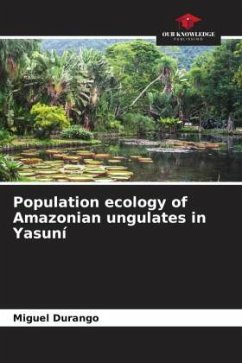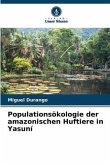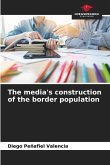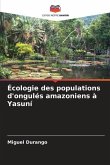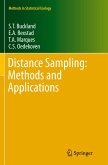This work was carried out in two localities with different degrees of anthropogenic affectation in the Yasuní Biosphere Reserve. Five sympatric ungulate species were studied using two methodologies in order to determine ecological and demographic parameters. Population density was estimated using the distance method in line transects. The relative abundance index was determined on the basis of the photographic capture rate, based on a systematic census. Camera traps also provided information on the activity patterns of the species studied. The results showed population densities of less than one individual per square kilometre for red deer (Mazama americana), Amazonian brown deer (Mazama nemorivaga) and tapir (Tapirus terrestris). Densities between 2.2 - 5.1 ind/km2 were found for the collared peccary (Pecari tajacu) and between 1.2 - 33.6 ind/km2 for the white-lipped peccary (Tayassu pecari), both gregarious species.
Bitte wählen Sie Ihr Anliegen aus.
Rechnungen
Retourenschein anfordern
Bestellstatus
Storno

